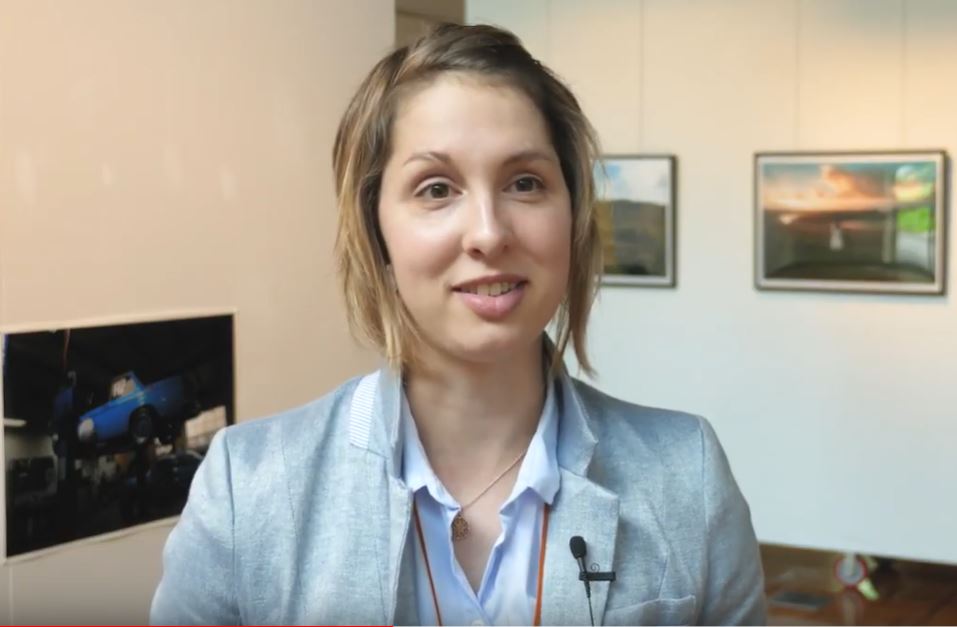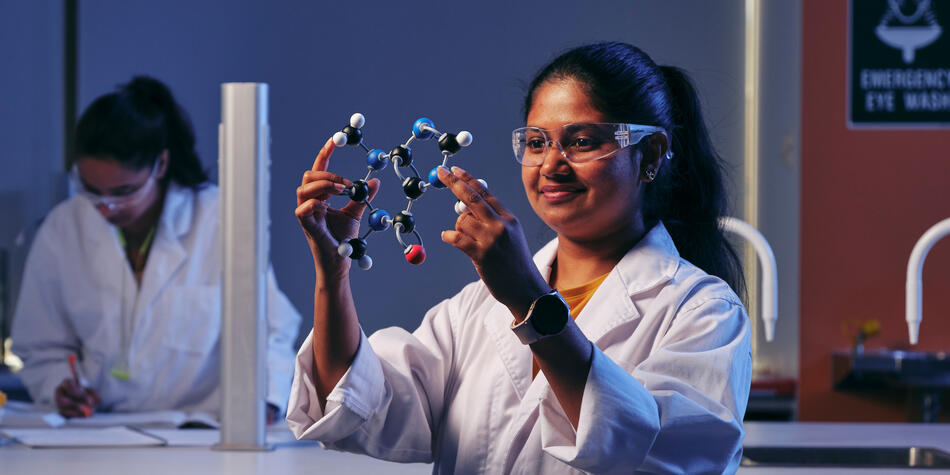It's easy to fall into the trap of picturing your future career through a single-degree lens. Whether it's law, allied health, finance or creative writing, a Bachelor of Laws, Nursing, Commerce or Arts might seem like your only option, even if you’re not exactly sure what you want to do after graduation.
The good news is there's another option that allows you to indulge varied interests, keep your options open and inspire a wealth of career opportunity: double degrees.
Whether it’s a familiar combination like a Bachelor of Arts and Master of Teaching (Secondary) or something a little more unusual like a Bachelor of Public Health and Health Promotion and Bachelor of Commerce, oodles of opportunities exist at the cross-discipline intersection, regardless of your pathway to university.
For Deakin University alumni Molly Patton, who studied a Bachelor of Arts (Photography) and a Bachelor of Science, this cross-discipline approach allowed her to combine twin passions for creative arts and STEM (science, technology, engineering and maths). She has gone on to build a successful creative agency dedicated to scientific communication – and forge a unique and inspiring career path.
Multiple passions? A double degree makes it possible
Even though she's on a clear career path now, Molly says it didn't start out that way. 'I never knew what I wanted to do,' she says.
'A lot of my friends wanted to be paramedics or doctors or lawyers or teachers, really dead-set career paths. I enjoyed doing a lot of things and I was interested in creative arts and science. I just wanted to study photography and science and keep as many doors open as I could.'
So she embarked on an undeniably unusual double degree, combining an Arts major in photography – as well as a second in Mandarin – with a Science major in biochemistry. Part way through her studies, and after completing an internship with Deakin’s Institute for Frontier Materials, Molly started to see how her interests and abilities could fit together professionally.
'I noticed that at every single level of academia there was a serious lack of visuals that properly reflected the quality of the science being done, which has a direct influence on things like collaborative opportunities and funding,' she says.
'There was a real gap, and that's what set me on a path to realising that with my skillset, my background in science as well as aesthetics, design and photography, perhaps I could help.'
Blending creative arts and STEM careers
Molly founded Patton'd Studios in 2017. The studio, which operates as a collaborative hub of creatives, designs visual resources that communicate the value of scientific research to different audiences. It also helps to promote ideas that could be translated into real-world solutions. Services include photography, videography, graphic design, scientific illustration, animation and web development.
'We have academic and private industry clients, as well as some from government,' Molly says. 'We act as a conduit between academia, industry, government and the public. We make information accessible and make it look great, getting people interested and helping them to realise the value of scientific research.'

A STEM career with a difference
What happens when you combine photography with science? Molly, founder and director of Patton'd Studios, shares her story.
Making a double degree happen on campus
When it came to the logistics of studying two very different disciplines, Molly says both faculties helped her make her unusual subject choices possible.
'They allowed me to swap classes at the start of every trimester so I could fit everything in, no questions asked – they were just fantastic,' she says. 'Deakin was the only major university I came across that made it really easy to study a creative arts major like photography alongside the science stream. They were supportive of my unusual subject choices, and they maintained that throughout my entire time at university.'
Despite the challenge of studying across two very different faculties, Molly says it ultimately enriched her university experience. 'Sometimes I felt disoriented, belonging everywhere and nowhere all at once,' she says. 'But eventually I became myself in all circles and it was seriously the greatest experience.
'The contrast in subjects and faculties amplified my university experience and definitely made me a more open-minded and worldly person.'
Double the skills, double the opportunities
Inspired to blend cross-discipline interests but not exactly sure where it may lead or which course to study? 'Embrace the uncertainty,' Molly says. 'It can be really daunting not knowing what you want to do, and it can feel like you're being left behind.
'Arts and science is just one of many different combinations that are not common, but really special. It took me a long time to figure out that it's okay not to have all the answers and to just enjoy the fact that there are no set plans.
'Do what you enjoy and, worst case scenario, if you don't like it, you can swap and do something else.'
Why limit yourself? Here are three reasons to study two degrees at once:
- Be confident your career can evolve as you do with double the skills.
- Graduate work-ready and in-demand from employers across multiple industries.
- Get a second degree in as little as one extra year of study.

